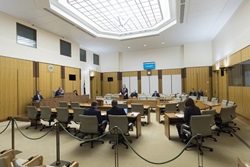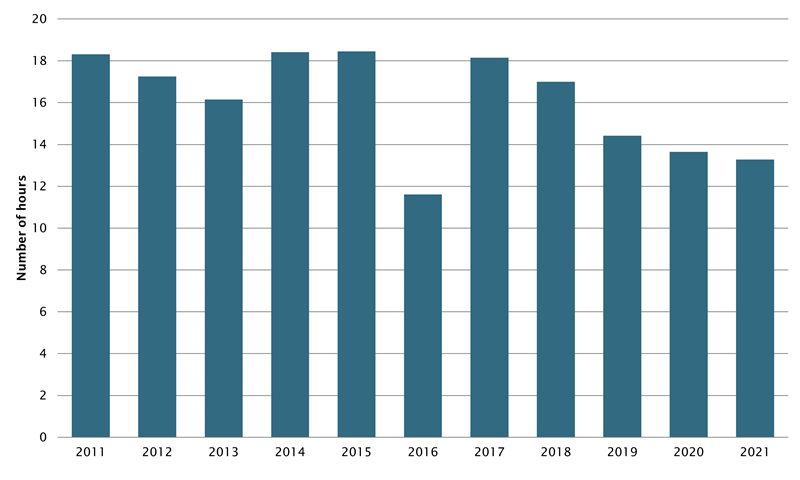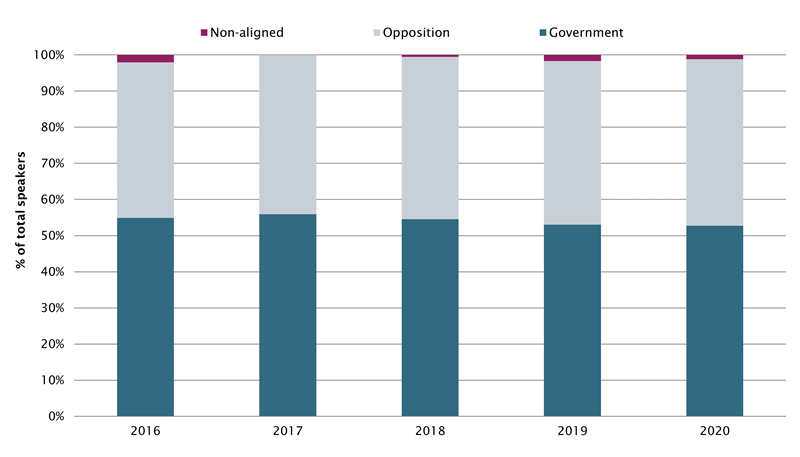
AUSPIC
Posted 17/11/2022 by Stephanie Gill
Now that the Treasurer’s Budget speech is over, the work of legislating the Budget begins. This includes parliamentarians sitting in the Federation Chamber for the Consideration in Detail (CiD) stage of Appropriation Bill No. 1 (the Bill), navigating House Estimates. If you’re not familiar with any of these terms, don’t worry – you’re definitely not alone. House Estimates gets significantly less attention than its Senate counterpart, so this Flagpost seeks to provide some clarity and context around this largely unknown aspect of House of Representatives procedure.
House Estimates has existed in one form or another since Federation, with Glenn Worthington, current Clerk Assistant (Procedure), having previously analysed its history and evolution in a 2011 paper. The present arrangements were established in 1995, following recommendations in an earlier House Procedure Committee report. As directed by Standing Orders 148–9, House Estimates is essentially the CiD stage of the Bill, usually held in the Federation Chamber (previously Main Committee), as an opportunity for members to scrutinise proposed expenditure. It last occurred in June 2021, at which time Deputy Speaker Julie Owens provided an overview of how she viewed House Estimates.
A bit like Senate Estimates …
There are some similar but not identical elements between House and Senate Estimates. Both have programs, Ministers attending, and questions taken on notice (QoNs); however, the specific details differ slightly.
House of Representatives Practice explains it ‘is the usual practice for a Minister to suggest a different order [and time allocation] for consideration’ compared to the previously proposed schedule. This negotiation is analogous to members of Senate Legislation Committees developing an Estimates program and allotting time.
By convention, House Estimates is attended by the responsible Minister, Assistant Minister or representative (though rarely the Prime Minister or Treasurer) and their opposing Shadow Ministers. As the majority of ministers sit in the House (currently almost 80%) House Estimates has a higher attendance of responsible ministers than Senate Estimates. Backbenchers and crossbenchers can also attend, as can departmental officers (but unlike Senate Estimates, only in an advisory capacity).
Responses to House Estimates oral QoNs, between the questioner and relevant Minister, are not publicly recorded. Written QoNs are more formalised (via Standing Order 105) and appear on the Notice Paper, with responses (required within 60 days) recorded in Hansard. Conversely, Senate Estimates QoNs are coordinated by the portfolios and committee secretariats (see this previous Flagpost for further detail).
… but not exactly
Other elements of House Estimates are very different to Senate Estimates. Unlike its counterpart, House Estimates has no regular scheduling, is constrained by the passage of the Bill and the speaking procedure complicates getting information.
There are no designated dates in the sitting calendar for the once per Budget cycle House Estimates. Instead, the Bill’s progression to CiD (usually a couple of sitting weeks after the Budget is released) can take place over several sittings and is constrained by time requirements in passing the overall Bill. Between 2011–21, an average 16.1 hours was spent on House Estimates (see Figure 1), compared to 22.9 hours in the second reading stage, with debate not restricted to the subject matter under discussion in the latter (Standing Order 76(c)). As a point of comparison, 326.9 hours was spent in hearings for the 2021–22 Main Budget Senate Estimates across eight Senate Legislation Committees.
Figure 1 Time spent on House Estimates

Source: House Procedure Office
Like its Senate counterpart, House Estimates encourages a question and answer format. However, in reality this rarely occurs and is limited by procedure. Following convention, the (less than 5 minute) call alternates between government and non-government members, where Ministers respond to questions. Since 2008 this has been complicated by the increasing participation of backbenchers, whose contributions are generally more reflective of a debate. This format therefore essentially mirrors that of Question Time, rather than Senate Estimates, which having referred the particulars of proposed expenditure in the appropriation bills and Portfolio Budget Statements, requires questions and answers to be relevant to these specifics.
Will the crossbench have a voice?
The increased number of crossbenchers will be a notable consideration for the Federation Chamber Chair when sharing the call. Although Standing Order 65A allocates speaking opportunities for crossbenchers, this does not cover the CiD stage. Figure 2 shows that previous House Estimates speaking opportunities have been dominated by Government and Opposition members, although this was before the record-breaking election of the current crossbench.
Figure 2 Percentage of total speakers at House Estimates

Source: House Procedure Office
For further information and context, see: